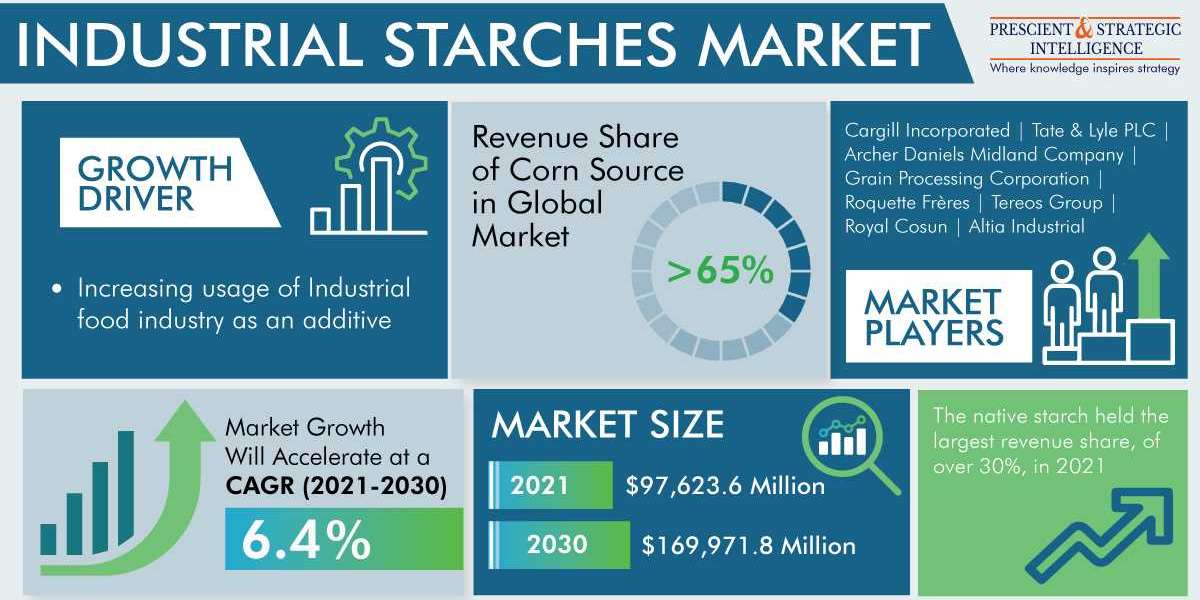In 2021, the industrial starches market stood at $97,623.6 million, and it is projected to reach $169,971.8 million by 2030, advancing at a CAGR of 6.4% from 2021 to 2030. The food industry majorly uses industrial starches in the form of additives, owing to their gelling, film-forming, thickening, and stabilizing characteristics. Moreover, because of the stringent regulations of government agencies, such as the FDA and FSSAI, regarding the quality of food products, there has been a surging demand for these starches all around the globe.
The extensive government support in numerous countries assists in the efficiency of the global supply chain and the attainment of national food security amid hunger crises. This and the presence of a strong logistical network justify the negligible impact on the agriculture sector of the outbreak of COVID-19. Furthermore, there was a positive impact on the pharmaceutical industry, with the surging starch use in medicines and drugs. However, most industries, including textile and paper pulp, were shattered, but with the removal of lockdowns, the market will grow consistently in the forecast period.
Under segmentation by source, corn will spur the industrial starches market growth, being a prominent raw material. The overall corn production in 2022 exceeded the 2021 numbers by more than 7%, on account of the swift expansion of the food processing and agricultural sectors. Starch is used in various forms in the paper industry, such as coating agents, surface sizing agents, and wet-end additive agents. The inherent environmental benefits over the conventional plastic raw materials, primarily biodegradability, drive the market.
The highest revenue generator in the industrial starches market was native starch, accounting for an around 30% share, in 2021. There is a high popularity of native starch in the food processing industry as a stiffening agent, to provide stability and texture to the food. Additionally, it can be used to bring a loose mixture together, being a binding agent. Moreover, there is a skyrocketing demand for natural-ingredient-based food, as consumers are well-informed about the environmental impact, nutrient content, and safety aspects of food in the long term.
In addition, there is greater adoption of starches in industries such as paper and textile. Moreover, the growing young population, higher disposable income, and, consequently, the rising purchasing power of consumers, accompanied by the snowballing demand for starch-containing food, will provide lucrative opportunities for the regional market.
The rising investments in emerging economies will also expand the industrial starches market. The food processing sector is witnessing high growth rates in developing countries, such as China and India, under a vision of becoming the biggest markets in these region. This is achievable with the rising per capita income, which drives the food demand. Essentially, the visions are of the regional governments, who are intensifying efforts to improve the hunger situation. For instance, 100% foreign direct investment (FDI) was announced by the Indian government in the processed food industry in 2020.
Hence, the players in emerging economies will act as a catalyst for the expansion of the market, by diversifying their product portfolios.



